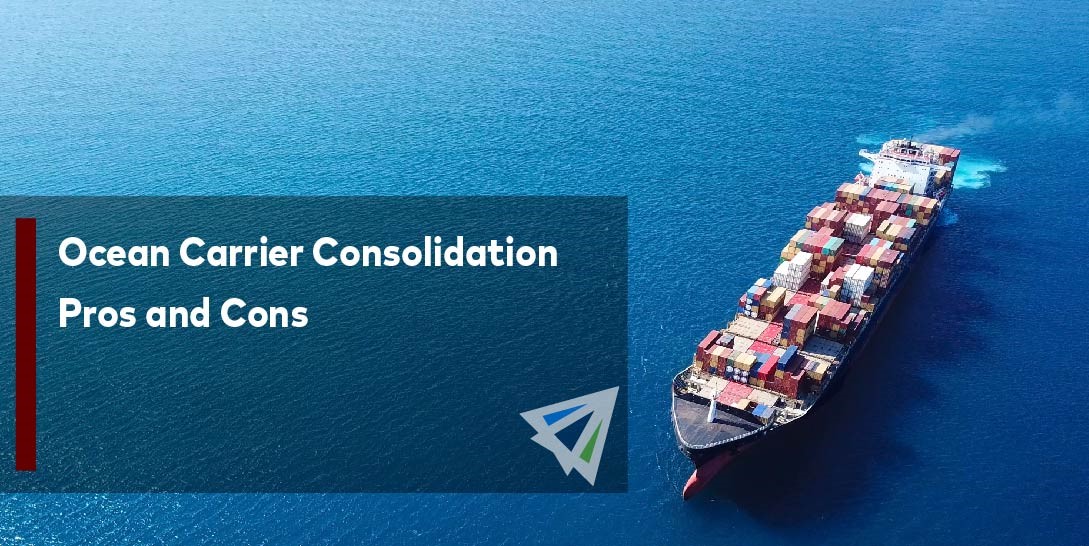The shipping industry at large is comprised of thousands of companies worldwide working to keep cargo moving efficiently. Between truckers, draymen, intermodal carriers, freight forwarders, warehouse workers, CFS’s, and other 3PL’s, every shipment is handled by a slew of different service providers. And this diversification in providers helps the industry to remain competitive in service availability and pricing. However, one piece of the global supply chain that fails to demonstrate diversity in competition and providers is ocean carriers.
It actually didn’t always used to be this way. In earlier years as the international shipping industry took off, there were a variety of ocean carriers with different routes, services, and equipment available. But as the years have gone on, consumer demand has skyrocketed, and the need for more capacity has increased, the playing field shifted to make way for more acquisitions and growth. And it all lead us to where we are at now – a total of 16 major ocean carriers.
State of the Industry: Few Controllers
When it comes to vessel and equipment capacity/availability and pricing, it’s pretty much controlled by 3 primary groups. The steamship lines control the availability of container ships, as well as the associated freight rates. Container equipment lessors control the order of new containers and leasing rates. And container factories control the pricing for newly made shipping containers.
Cons
The issue is the imbalance of profitability to competition. There are relatively few companies in each of these 3 sectors, yet the industry is insanely profitable. This is essentially keeping all cash flow in large-scale international shipping markets between the hands of a couple companies that control the availability and pricing of equipment and shipments.
Recent reports show that over 80% of all shipments are actually handled by only 8 steamship lines. Another large issue is the lack of urgency for these companies to change anything. Consumer demand is at an all-time high, capacity is maxed out, and there are containers waiting in Asia yet to be shipped. Even though freight rates are higher than they ever have been (by the choice of steamship lines,) there is no incentive for them to change their plans.
Ocean carriers are currently ordering new ships to handle the increase in demand, but they aren’t expected to be ready for use until 2023 to 2024, which offers to help to the current congestion crisis. As this is happening, the largest 8 ocean carriers are also acquiring tonnage which is feeding ocean carrier consolidation into fewer providers.
These actions are consolidating power and industry pricing and capacity control into the hands of a few, creating an environment with little urgency to adjust processes for the benefit of shippers. The lack of competition is being leveraged against shippers who are desperate to simply get any amount of capacity for affordable rates on ocean vessels.
Pros
We all know that infrastructure and equipment is expensive to build, and the increase in available containers and container ships comes from the resources available to these large-scale shipping industry leaders. It’s due to their large ownership of the market that they are able to invest in their infrastructure, order more container ships, and continue expanding offerings in the international ocean shipping market.
In addition, the congestion crisis needs processes to be streamlined to aid in increasing efficiency for the industry. While we are far from peak efficiency, ocean carrier consolidation does carry a couple of benefits in this department. Sailing schedules are more controlled as fewer companies worry about the logistics of getting ships loaded and shipped out. Communication between forwarders, 3PL’s, ports, and others is also easier managed between fewer large-scale players.
Conclusion
There are certainly pros and cons to ocean carrier consolidation, but one thing is sure – the consolidation has lead to massive increases in freight rates, and the consolidation is being leveraged against shippers who have little power in the current market.
Fewer, larger players can be argued to benefit efficiency and allocate the necessary resources to invest in needed infrastructure and equipment. However, it also eliminates competition and centralizes mass industry-wide control into the hands of a few massive companies.
Please reach to our team at InterlogUSA for more information or questions you have regarding your shipment.
